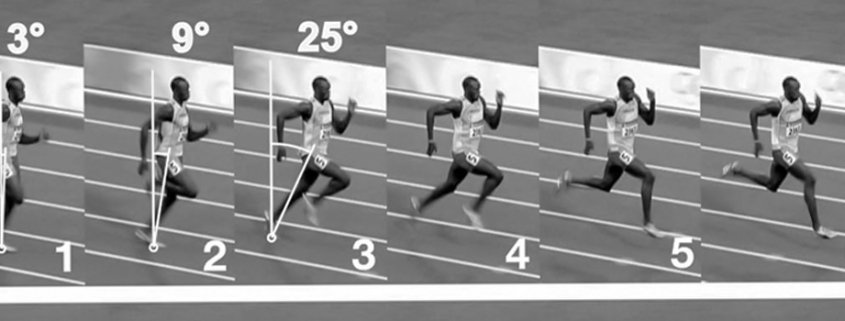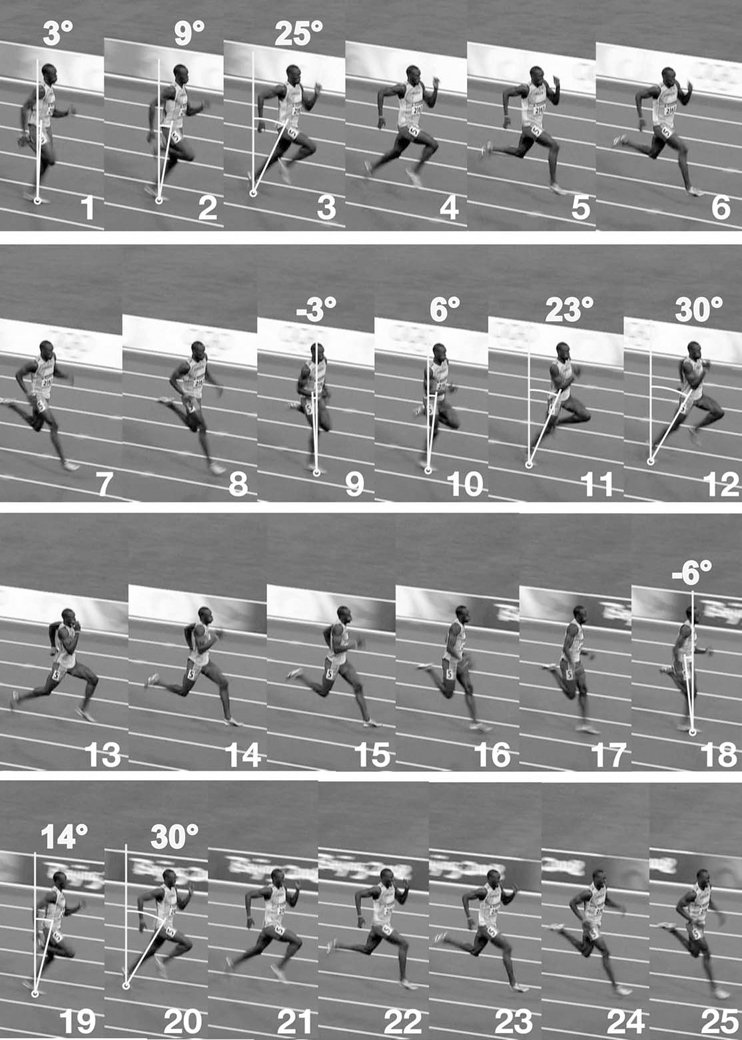Technique: Analysis of Usain Bolt’s Running Technique
After Usain Bolt’s victories with World Records in the Olympic Games in Beijing, and then in the World Championship in Berlin, our desire to understand the reasons and the basis of his phenomenal running is quite natural. Even a quick look of a non-professional is enough to see an obvious difference in running of Usain Bolt and his rivals. Bolt’s running is light, playful, relaxed and at the same time, impressively powerful. Listing of these elements, however, does not help us understand the reasons of such an impact on our feelings.
What is hidden behind the outer, visible picture of running that defines the superiority of this talented sprinter? What does he do better than others, and what parameter of the environment is he using that others don’t?
Let’s do an analysis of Usain Bolt’s running technique. There’s no need to prove that this is not about any one factor, but the system of factors, best seen in my opinion, during the period of support.
Physically with his height of 6’5 Bolt is practically the tallest athlete in the World’s history of sprinting. To some extent, though not directly, from my point of view, it is reflected in the length of his running step. In the final heat on 100m in World Championship in Berlin Bolt made 41 steps with an average length of 2.44m. His closest competitor Tyson Gay (height 5’11’’) made 45.45 steps with the average length of 2.20.
But the influence of the height on the step length would be too simple an explanation for his superiority. Behind the seemingly light and relaxed movement there is a different running technique separating him from his rivals.
To explain this different technique of running, let’s take a look at it from the point of view of the theory of Pose Method, which is based on principally different concepts from those previously accepted ones, the latter based on priority of muscular efforts, directed to active movement of legs pushing the body forward.
In my understanding, the most important factor is that Bolt uses gravity, to be more exact, gravitational torque, as the leading factor that allows him to more effectively involve all other forces, working as a whole and highly effective system for horizontal repositioning of the athlete with high velocity.
Simply speaking, in his running he uses rotation of the body around the point of support under the action of gravitational torque, which in essence is a free falling of the body forward.
Certainly it is happening in a limited frame of space and time during the period of support from the vertical position to the end of support. In reality, indeed, it is about a relatively small angle in space where the falling is happening. By our theoretical calculations these angles range from 0 to 22.5 degrees (starting from the vertical) for running with a relatively even speed.
The key running Pose, favorable for performing falling forward and allowing us to integrate all participating forces into one system moving a runner forward, is the Running Pose at midstance or vertical position, when GCM (general center of mass) is over the point of support.
On frames 1, 10 and 19, with a varying degree of approximation, Bolt is in the running Pose, starting from the vertical and maintains it to the end of support, which can be seen on frames 3 and 11, and also between 19 and 20, where this moment is missing.
Preservation of the Pose during the rotation of the body around the point of support proves that the body is rotating (moving) as a whole system. On the one hand, it allows for better conservation of momentum of the body and, on the other, it allows for the use of gravitational torque for angular acceleration of the body after it passes the vertical position. Indirectly, another proof of the body rotation on support is provided by the knee of the support leg maintained in bent position. On frames 1-4, 10-12, 19-21 it could be seen very well. I.e., he is not “pushing off”, but is “waiting”, “allowing” to gravitational torque to provide the angular acceleration of the GCM.
Therefore, Bolt is more effective in falling forward. Using a special speed table (developed together with professor A. Pianzin), which takes into account individual anthropometrical data of the athlete, his step frequency (cadence), etc., I got an average data of angles of falling of Usain Bolt and Tyson Gay in the final 100m of World Championship in Berlin. Bolt’s calculated average angle in 100m with the time 9.58 seconds was 18.5 degrees with the average step frequency (cadence) 4.28 steps per second (257 steps per minute), and Gay’s, with the time 9.71 seconds – 18.4 degrees, and step frequency (cadence) 4.68 steps per second (281 steps per minute).
Running sequence of Usain Bolt, please disregard the degrees and markers.
Image courtesy of Russian Track and Field Magazine.
At the fastest 20m segment of the distance between 60-80m, where Bolt had the highest speed 12.42 m/s with the step frequency (cadence) 4.4 steps per second (264 steps per minute), his angle of falling was reaching 21.4 degrees, the same as Gay’s with the average speed 12.27 m/s and the step frequency 4.8 step per second (288 steps per minute).
All of this makes sense, i.e., speaking in the language of physics; Bolt just more effectively transforms the rotational (angular) velocity of the body into horizontal.
In a simple way this could be presented as a well-known equation of relations between linear and angular velocities in rotational movement of the body: v=ωr, where v- horizontal velocity of GCM, r – radius of rotation of GCM, ω – angular velocity of rotation of GCM. He uses his advantage in height (radius of rotation) and maintains his body in Pose favorable for the action of gravitational torque, relatively longer and better, than other sprinters. Therefore, Bolt’s run builds up on highly effective combined use of factors for moving body forward.
GCM, at the same time, having completed its rotational movement by the end of support, continues moving by oblique trajectory in the air, similarly to that of a stone released from a sling, until the next landing in Pose.
Comparing Bolt’s running with that of his rivals gives us an opportunity to see that his technique essentially differs in details of the Pose and its maintenance until the end of support (which I call a standard), giving him a possibility to use such an external factor as gravity and his natural gift – height to the maximum. On frames 3, 11 and 20 where support practically finishes (ends), the position of the swing foot is close to the knee of the support leg.
It is necessary to mention here, that visually these differences in technique are very small, almost invisible, but is it those differences that create the base for our impression of his movement as light, relaxed and fast.
At the end of the day, it is not important how: consciously or accidentally did Bolt come to this technique, the main thing is that he performs it very well due to his talent. This technique allows him to use his genetic potential, natural gifts to the fullest and to develop his psycho-emotional and mental abilities to the highest level.
Some prognosis about his possible progress. If he manages to increase his average step frequency of running to the level of his rivals, just to something around 4.5 steps per second (270 steps per minute) having the same average angle of falling, his result on 100m could be 9.11 seconds. Isn’t it impressive? But he, so far, is dreaming “only” about 9.4 seconds!
Recommended:




Thank you for this article. It was very useful as I was searching for it from past few time and it helped me a lot. Thanks again.